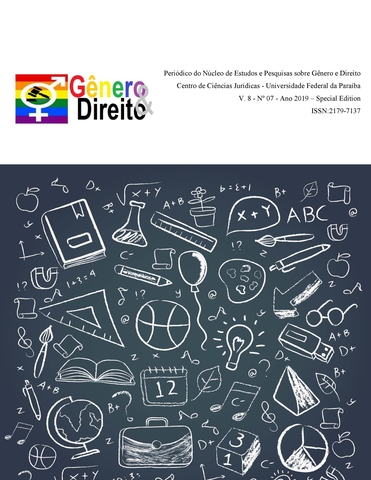THE INFLUENCE OF THE ENGLISH LANGUAGE ON THE RUSSIAN YOUTH SLANG
DOI:
https://doi.org/10.22478/ufpb.2179-7137.2019v8n7.50017Palavras-chave:
dialect, youth slang, slang expressions, stylistic featuresResumo
This paper deals with the analysis of modern youth slang in the English language. The definition of slang attracts attention of modern philologists. Now there are a fairly large number of slang definitions that quite often contradict each other. Slang is one of the most problematic and main aspects of lexicology, as it reflects the linguistic and cultural features of the society that uses it. Students should select texts based on the language of their future specialty, make assignments for the consolidation of the passed terminology (Erofeeva & Yusupova, 2018). Today, slang is one of the most interesting language systems of modern linguistics. This paper discusses issues related to such a concept as slang, the problems of its use in spoken language of modern youth, as well as the reasons for the penetration of vocabulary into the language. In the course of studying, analysis method and questionnaires were used. Questionnaires enabled to quickly identify and interview large groups of people by a small number of sociologists. The ways of borrowing from other languages, the main ways of the formation of slang expressions were analyzed, the question of frequent use of these or those words in the spoken language of youth was also considered
Downloads
Referências
Arnold, I. V. (2010). Stylistics of Modern English: (Stylistics of Decoding): Textbook. Manual for Students of Pedagogical Institutes for Speciality “Foreign Language”. – 3d edition – M.: Prosveshcheniye, 300 p.
Dai, W., & He, Z. (2002). A new concise course on linguistics for students of English. Shanghai. Shanghai Foreign Language Education Press.(23-25).
Kudryavtseva, L. A., & Prikhodko, I. G. (2006). Dictionary of Youth Slang of the City of Kiev. 2300 words and phrases: manual. Edited by L. A. Kudryavtseva – K.: T. Shevchenko Kiev National University, 198 p.
Gorshunov, Y. V. (2012). Types of Semantic Relations Between the Components of Blends (Based on English Material). SPb.: Leningrad, 410 p.
Mishina, N., Javgildina, Z., Mishina, A., Gainetdin, D., & Belomoyeva, O. (2018). Design Practice as a Method of Professional Orientation of Teenagers in the System of Supplementary Education. Journal of History Culture and Art Research, 7(4), 132-137.
Hoey, M. (2012). Lexical priming: A new theory of words and language. Routledge. 155.
Jones, F. (2009). Literary translation. Routledge Encyclopaedia of Translation Studies, London: Routledge, 152-157.
Ionina, A. A. (2012). Peculiarities of Modern Textual Thinking. The SMS Language. – M.: Norma, 194 p.
Liberman, A. (2009). Word origins... and how we know them: Etymology for everyone. OUP USA.
Boase‐Beier, J. (2004). Saying what someone else meant: style, relevance and translation. International Journal of Applied Linguistics, 14(2), 276-287.
Bulyko, A. N. (2008). Large Dictionary of Foreign Words. 35 000 Words. - M.: Martin, 704 p.
Kayumova, G. F., Makarova, V. F., & Galiullin, R. R., (2018). Moral education of high school students in national (TurkiC) schools through literature. International Journal of Mechanical Engineering and Technology, 9(10), 1467-1475.
Kuzmina, E. K., Nazarova, G. I., & Nizamieva, L. R, (2018). Innovative technologies of teaching business French. International Journal of Engineering and Technology(UAE), 7(4), 85-87

